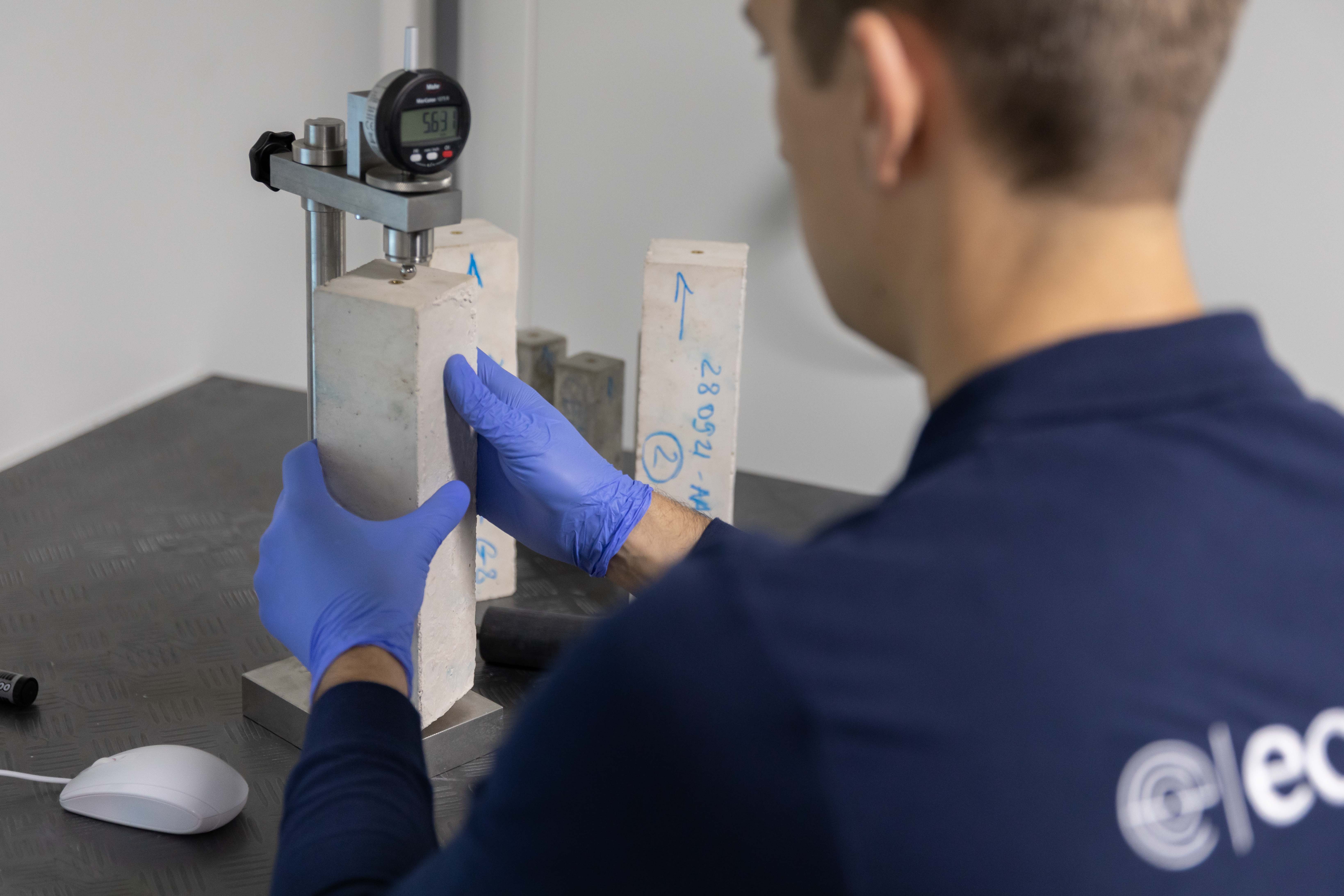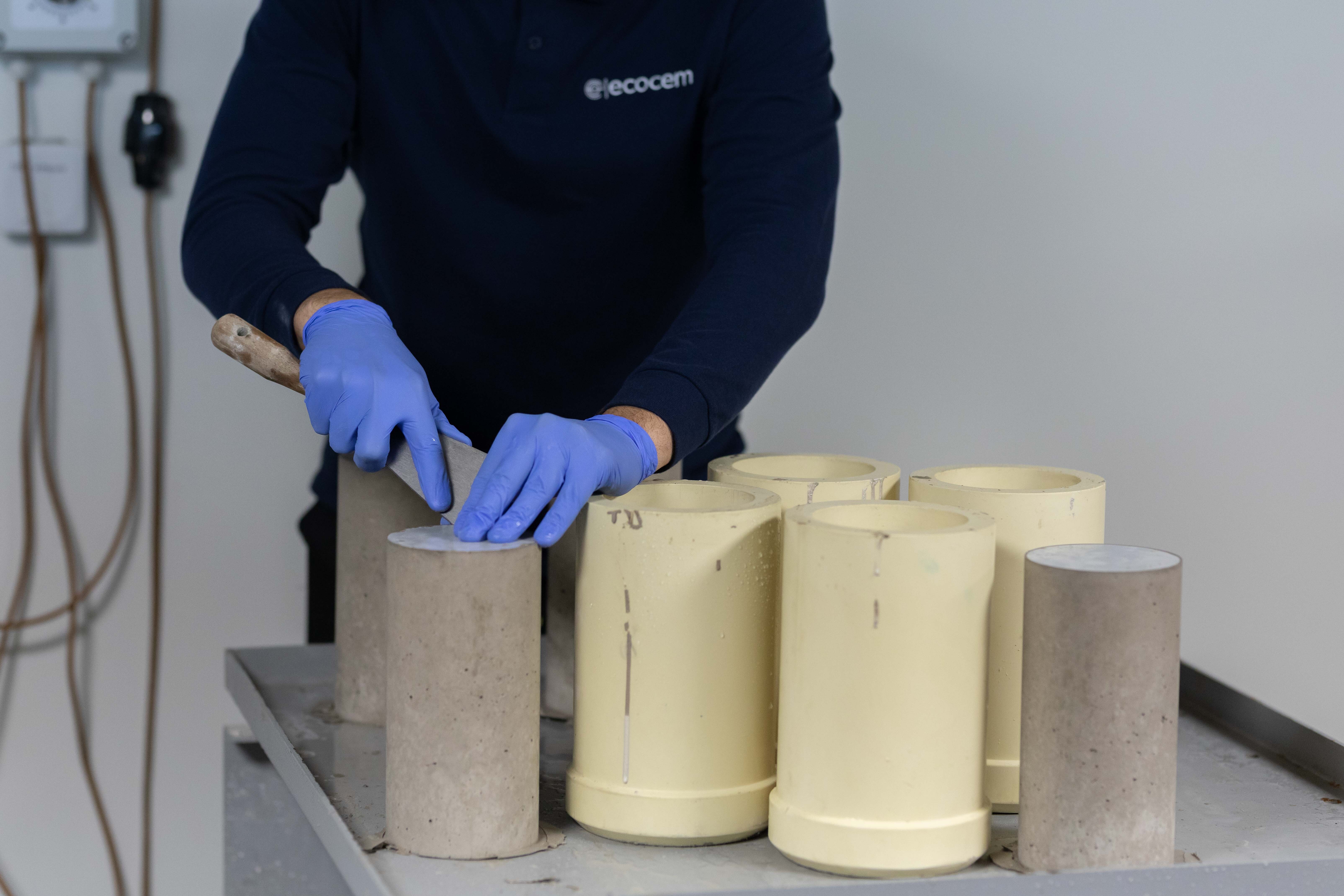
On average, the composition of cement in Europe is as follows
ACT is a new scalable low carbon cement technology which can deliver up to 70% CO2 reduction compared to conventional cements. It does this by reducing the clinker content of cement (clinker is responsible for 94% of cement’s carbon footprint) by up to 70% and replacing it with abundantly available fillers and local supplementary cementitious materials (SCM).
ACT uses raw materials already approved by the cement and concrete standards, with specific chemical additions for rheology and activation, and designed for concrete with a low ratio of water to cement.
ACT is highly scalable due to the raw materials and equipment used in its formulation. ACT can be deployed at mass scale in all concrete applications within existing industry infrastructure, with little limited need for additional investment.
ACT technology is the result of a decade of research and investment by Ecocem to develop a sustainable, low-carbon, low-cost, easy to produce, and globally scalable cement, which maximises the performance and decarbonisation potential of abundantly available filler materials and locally sourced industrial and natural SCMs.
The system is a complex interaction of particle size distribution, novel superplasticisers, and specific interactions between the raw materials used. The ACT cement content required in the end concrete product is comparable to that of a conventional cement, which means its low carbon benefits transfer from cement to concrete. Importantly, concrete made with ACT cement performs as well as, or better than conventional cement.
Ultimately it results in a scalable, rapidly deployable technology for mass market cements, that uses between 15-25% clinker compared to an average of 70-80% in conventional cements today
No other scalable low carbon cement technology developed to date can reduce the amount of clinker in cement while retaining or improving all of the properties that make concrete the world’s most popular building material, namely its workability, strength, durability, and cost effectiveness.
The key point is that ACT reduces the amount of clinker required to make cement by up to 70%. This therefore reduces the amount of CO2 emitted during the manufacturing process. ACT can use a range of low carbon materials to replace clinker.
Clinker is replaced by a range of alternative, low carbon cementitious materials including hydraulic, pozzolanic and filler materials, covering both industrial and natural sources.
The key objective is to ensure that whatever the local resources available they can be used efficiently as SCMs and allow the production of high-quality cement and concrete.
On current predictions the cement industry is not aligned with the 1.5°C target of the Paris Agreement. Industry decarbonisation roadmaps suggest cement production cannot be decarbonised by 2050. The recent IPCC synthesis report 2023 has reinforced the urgency of accelerating emissions reductions to “keep 1.5 alive”. ACT technology can deliver reductions in CO2 of up to 50% by 2030, essential to achieving the 1.5°C target
Low carbon cements are not new, the key challenge to date has been the availability of scalable raw materials. For the last 10+ years, Ecocem has invested in a sustained R&D programme to develop low-carbon, sustainable, competitive cement technologies which can address this challenge.
Substantially reducing the amount of clinker while retaining all of the properties that make concrete the world’s most popular building material, namely its workability, strength and durability, and cost effectiveness, is a major breakthrough.
To facilitate the rapid decarbonisation of the global cement industry, Ecocem will work closely with cement and concrete producers to make ACT technology as widely available as possible on an economically advantageous basis. In addition, technical support will be available from Ecocem’s innovation team.
Ecocem’s ACT Platform will support and enable collaboration and close working with cement and concrete production leaders to accelerate and expand the ACT solution and support its scalability across markets. This will include specific lab trials necessary to reach successful certification in the different targeted countries and adapt the technology to local SCMs. The ACT Platform will enable companies to optimise the technology at speed and scale.
We anticipate that ACT’s full production costs excluding CO2, will be comparable to those of conventional cement. ACT will also be competitive with cements of lower clinker factors.
Production costs and energy intensity for ACT are expected to be much lower than for any CCS/CCUS process.
The current industry view is that CCUS is one of the main technologies that can bring the industry close to net-zero emissions. The development of CCUS technology is essential; however, CCUS is no “silver bullet.” This technology will come at a high cost and require substantial investment, with limited potential for global deployment, and will not be operational even at modest scale before 2035. Instead of being the beginning of the solution, CCUS should be the end of the solution, mopping up any remaining CO2 after other “front of pipe” solutions such as ACT have been maximised.
CCUS also has a big challenge in terms of energy intensity. A 2018 report by the Institute for European Studies, “A Bridge Towards a Carbon Neutral Europe”, estimates that 12TWh of electricity would be required, per annum, for CCS in cement by 2050. Where CCUS is implemented, the energy requirement would be even greater, being up to 25x more energy intensive than CCS.
ACT low carbon cements can deliver substantial reductions in CO2 by 2030 ahead of CCUS coming on stream and without the costs associated with CCUS. We need greater focus on alternative solutions to decarbonise in the near term to meet 2030 targets and, therefore, align with a 1.5°C target.
Ultimately the success of ACT will be measured by a substantial reduction in CO2 emissions produced by the industry.
